White giants of the desert: the geological mystery of Harrat Khaibar (6 photos + 1 video)
Every year, millions of pilgrims flock to the holy city of Medina in Saudi Arabia to pray at Masjid an-Nabawi. 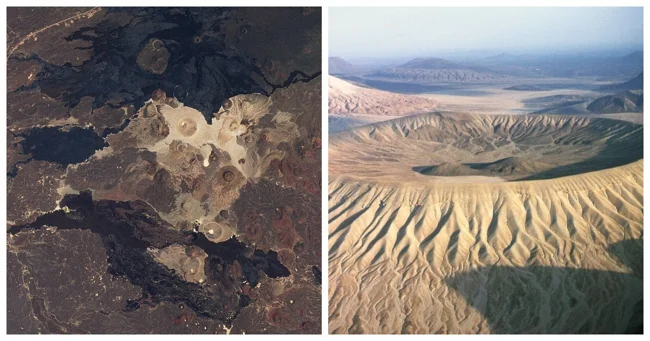
However, few of them suspect that this city rests on the basalt flows of an ancient volcano, whose now dormant crater is located just nearby. 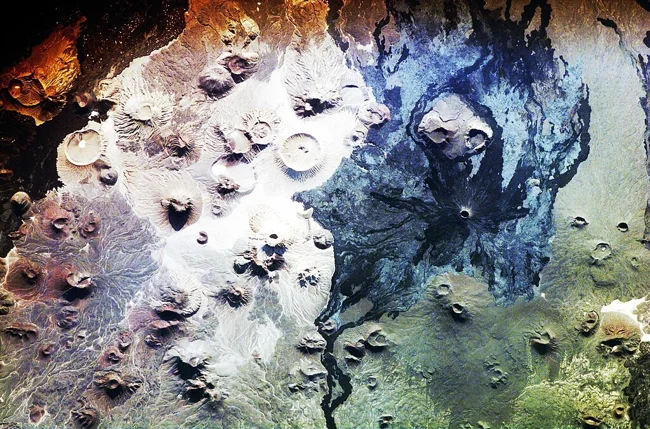
Harrat Khaibar, as seen from the International Space Station
These lands, known as Harrat Khaibar, contain some of the rarest creations on the planet: white volcanoes. They get their name from the unusually light-colored rocks, colored in pale tones by comendite, a light-gray volcanic rock with a blue tint, rich in silica and alkali metals. 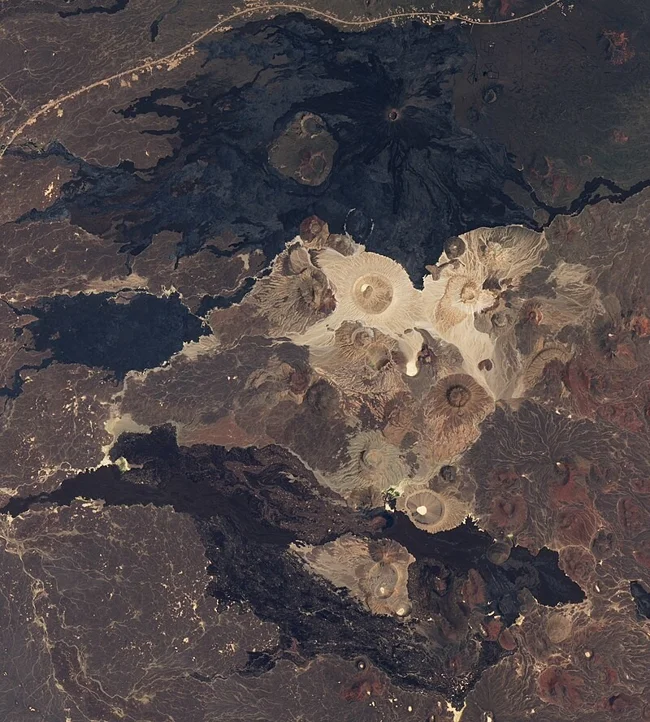
Contrasting colors of lava and ash reveal the geological origin of the volcanic cones of Harrat Khaybar
This unusual type of lava was first discovered in the Glass House Mountains of Queensland, Australia. It was later found in Sardinia, Corsica, Ascension Island, Ethiopia, Somalia and several other regions of East Africa. 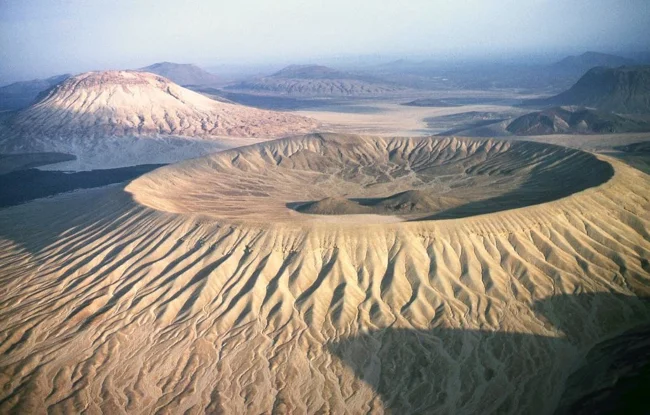
Harrat Khaybar is one of the largest volcanic fields in Arabia, covering an area of over 14,000 square kilometers. It was formed as a result of eruptions along a 100-kilometer meridional fault system that occurred over the past five million years. The last recorded eruption dates back to between 600 and 700 AD. 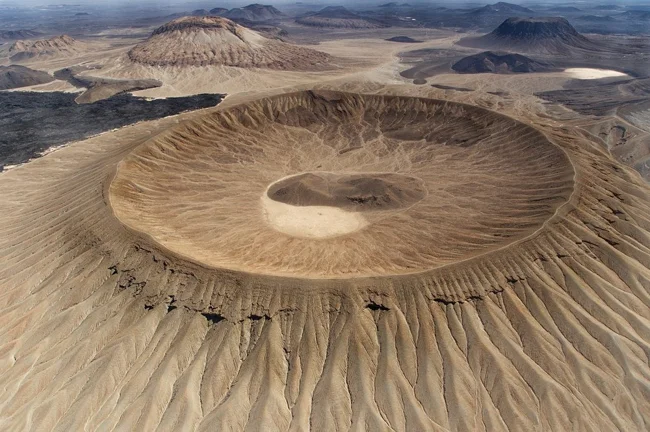
Harrat Khaybar displays an amazing diversity of volcanic rocks and dramatic landscapes, which is clearly visible in these images. 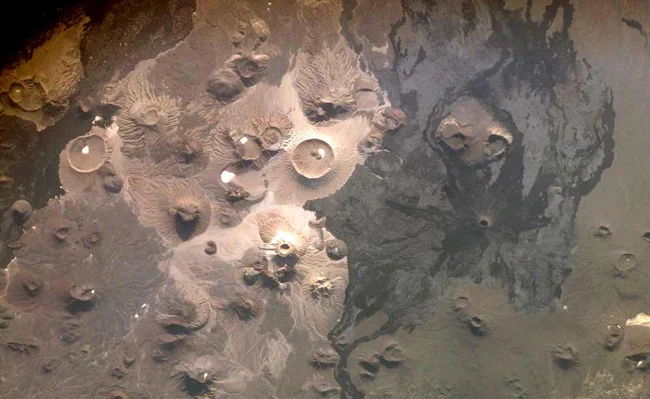
The symmetrical structures in the space image are tuff cones. They form when lava erupts in the presence of water. This combination creates wet, sticky pyroclastic deposits that can form a steep cone, especially if they harden quickly. The presence of these cones indicates that during periods of volcanic activity the local climate was much more humid. Today the region is completely dry, with negligible annual precipitation, which explains the almost complete absence of any vegetation.


























